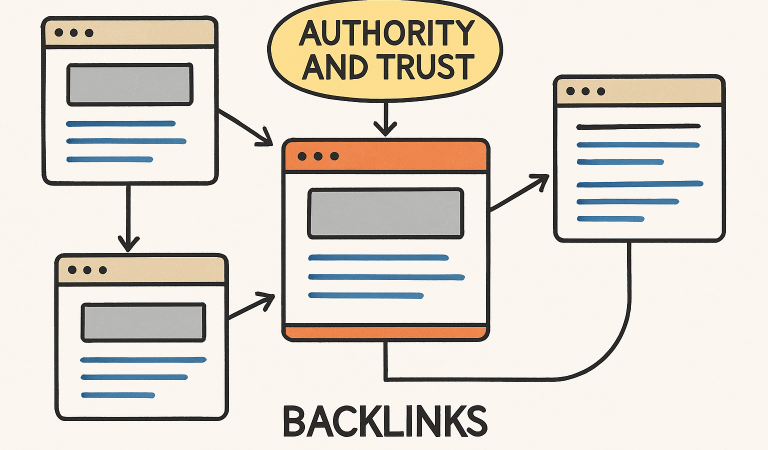How to Improve the CTR of your E-Commerce Website


Table of Contents
How to improve the percentage of recurring users in your E-commerce?
Some solutions to improve the user experience in your online store, are the following:
Improve the image of your brand as an ecommerce recognized in the sector.
To do this, you can promote your personal brand as an expert in the field and carry out promotional actions and offering free resources and services that provide value to users (gift of an ebook on a specific topic, post-serial, user guides, video tutorials …).
Optimize, update and improve the contents of your website, emphasizing those that work best and try to continue creating new content following that same line of work.
Time of Stay of Users in Ecommerce
This is another fundamental factor for the user experience and the organic positioning of any e-commerce. And there is no better way to know if users find what they are looking for, than by measuring the time they spend on the site.
In order to improve the time of stay you must have two clear aspects:
- Analyze the average duration of each session or the average time the user stays from entering the web until it leaves the same.
- Analyze the percentage or bounce rate of your ecommerce, that is, the number of users who enter the web and only consult a page of the domain, leaving it later without visiting other pages of the same.
Keep in mind, that this percentage interests you to be as low as possible and visit as many pages as possible within your domain, otherwise Google will understand that the content and your website are of little use or valuable to the Search carried out by users, negatively affecting the organic positioning of ecommerce.
How can you increase the time of stay or stay and reduce the bounce rate in your Ecommerce?
To improve the user experience and increase the time users spend in your ecommerce, you have different and multiple options that complement each other:
Offer an attractive, clean web design, optimized for mobile devices (responsive design). You must find that the ecommerce is clear and simple to use to promote proper navigation of your users and reduce the number of dropouts on the web.
Structure and hierarchize the information and contents of the ecommerce, will help the user to navigate the web (favoring web usability through intuitive options and functions) and find what you are looking for easily, to avoid being frustrated and decide to abandon the Web.
To favor the organic positioning of the articles, improve the user experience and also reduce the rate of rebound in ecommerce, it is advisable that the contents of the web have at least more than 1000 words, since in addition to being able to position more terms Without keyword stuffing (excessive use of keywords), the user will stay longer reading these texts (more options to offer added value through interesting information and differentiate from the competition as it will improve the perception of the brand by the user).
In addition, these contents must match what the user is looking for, so that they can find the information they need in a simple way and they are sufficiently useful. For this, they should use:
- Attractive Titles
- Attractive Themes
- Well-defined Content Structures
- Content Tables, etc.
If you improve the image of your brand, I assure you that you will improve the user experience on your website.
Offer different contents that extend the visit of the users as videos, infographics, graphics, images, tables, free online resources (templates, ebooks, etc.) …
It is also quite appropriate to suggest content related to what the user is visualizing at each moment on the web as related articles, featured posts, related comments …
It is a way of continuing to offer information to the user that in theory are of interest, making them stay longer on the web and preventing them from leaving so quickly.
Link or link the internal contents of the different pages of the domain to each other to help enhance the positioning of the most important pages of ecommerce, improve the navigability of visitors, and prevent them from leaving the web, as they will continue on a different page within it. user experience
Content is not always the only way to improve the time spent and the bounce rate on a web
It is true, the content itself is not the only way to achieve a good positioning, but if the most suitable. In any case, include quality written content and useful for users on your website, will always be a plus (guides, news, manuals, tutorials, tips, …).
But it happens, that there are certain niche markets that offer products that do not require a large amount of text content, as it goes into the background and is unnoticed by users. And it is this type of webs do not need content to meet the needs and expectations of the user.
This is something that happens especially in those sectors in which the public demands a lot of information and a great fluidity of it, such as platforms and online tools, online games, etc. That is, those segments that are dedicated to selling products and visual services online.
The new approach provided by the user experience makes it possible to clearly determine something that was previously considered a problem: some web sites are organically positioned with hardly any content in text.
Click Through Rate or eCommerce CTR
The CTR is a key performance indicator or KPI that shows the percentage of users who click on the ecommerce when it appears as a search result in the SERPs of the search engine.
This KPI is calculated by dividing the number of clicks that the ecommerce receives between the number of times it is displayed, that is:
CTR = clicks between impressions
For example, if ecommerce has 87 clicks and 1000 impressions, the online store will have a CTR of 8.7%.
It is the most relevant factor in terms of user experience for the improvement of the global positioning of an ecommerce.
But, why is this factor important for the organic positioning of an E-commerce?
Its importance lies in the fact that it is a KPI or factor that determines the number of users who choose to enter the online store when they search for information related to one or more keywords in the search engine, indicating to the same that this result is relevant for those keywords.
As a general rule, the more clicks you get in the ecommerce, the more positions will go up in the Google search results.
It is also important to be clear that the higher the ecommerce appears in the SERPs, the more likely it is that users will choose this option over other online stores (it is a process that feeds back).
As you can see clearly in these two graphics extracted from this interesting post by José B. Moreno Suárez , the first positions are those that take the cod.
Distribution of CTR in the SERP of Google
Position in the SERPs AOL NIELSEN CORNELL % rounded:
1 42% 51% 56% 50%
2 12% 16% 13% 14%
3 8% 6% 10% 8%
4 6% 6% 4% 5%
5 5% 5% 5% 5%
6 4% 4% 3% 4%
7 3% 2% 3% 3%
8 3% 1% 3% 2%
9 3% 1% 3% 2%
10 3% 2% 3% 3%
NOTE: the figures are ’rounded’ for the example.
This is a way to check roughly the level of distribution of the CTR in general in the SERP’s of Google, but there are many more elements that occupy a space in them and take much of the clicks and make it difficult to estimate and assess exactly the level of distribution of the CTR as, for example, advertising, maps, images, news, etc.
How to improve the CTR percentage of your E-commerce?
To improve the user response and increase the CTR of your online store, you have several options:
Improving the memory of the brand name in the mind of the consumer is a way for users to remember the name of your ecommerce and look for it, because if they perform this type of search, it is more than likely that they end up clicking in your online store
Improve and optimize some aspect of SEO on page in your content, such as keyword density, title and meta-description tags, URL, data bookmarks, Alt tags in web images, etc.
Conclusion
As you can see the user experience is a concept closely linked to the user experience, and it has to be improved so that visitors interact with the ecommerce as you have planned (this is the fundamental objective for which you created the store on-line). user experience
The user experience and therefore the organic positioning are intimately related aspects and are fundamental and determinants for the success of any ecommerce, since they have a direct impact on the level of sales of the same ( greater amount of traffic to the web and greater ease for users to find ecommerce), in the improvement of brand image and engagement, in customer loyalty, etc.
The user response is increasingly important because its approach is fully user-oriented as the center of the commercial process, approach by the way, very fashionable and that is being followed in all types of sectors and also in traditional marketing.
The evolution of Google’s own algorithm has meant that SEO positioning has more to do with the needs, interests and expectations of users and less with spam and intrusive promotion .
I hope this article has been useful to improve the user experience on your website. And you, what user response factors do you take into account for the positioning of your ecommerce?






NICE WEBSITE